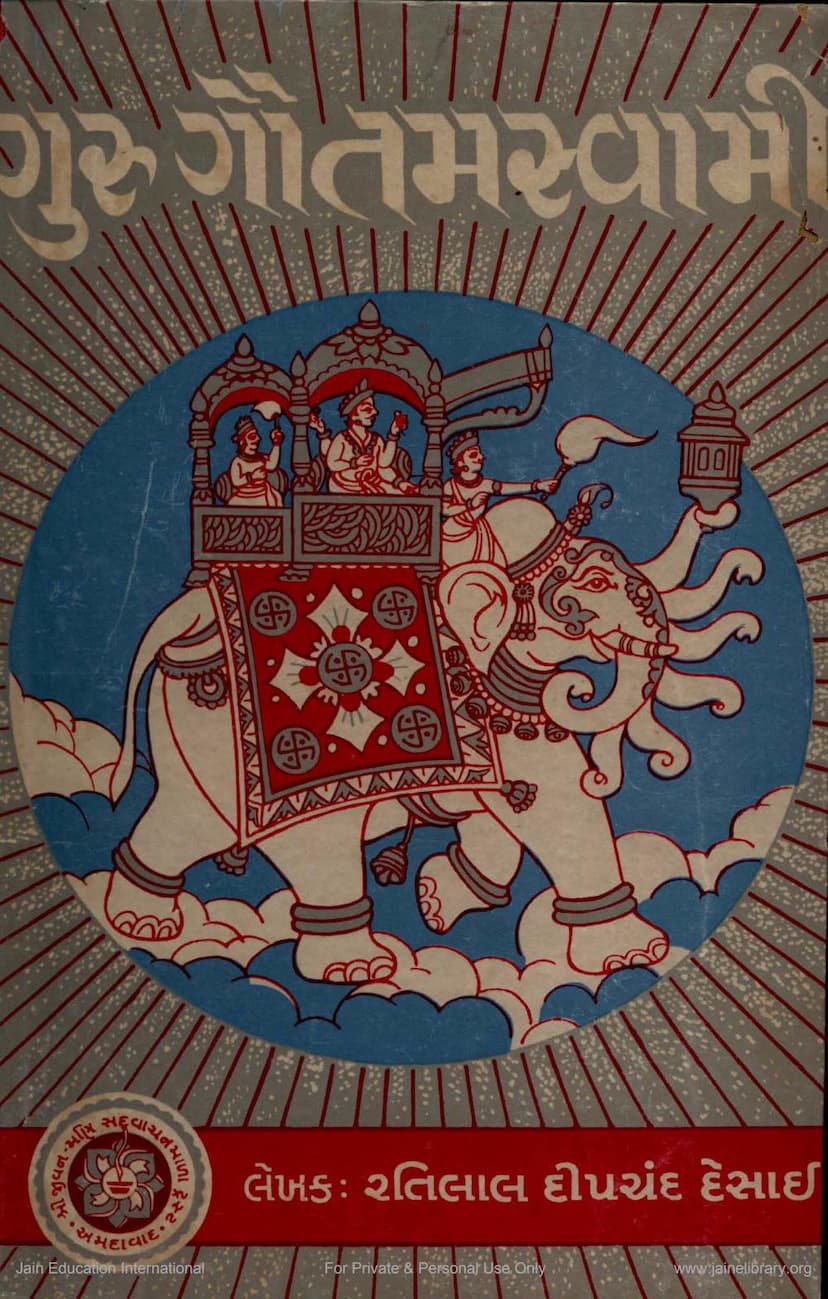Guru Gautamswami
Added to library: September 1, 2025
Loading image...

Summary
This document is a summary of the Gujarati book "Guru Gautamswami" by Ratilal Dipchand Desai, published by Shri Jivanmani Sadvachan Mala Trust in January 1975.
The book focuses on the life and teachings of Gautamswami, the chief disciple of Lord Mahavir.
Here's a breakdown of the key aspects covered in the book, based on the provided pages:
- Title and Author: The book is titled "Guru Gautamswami" (ગુરુ ગૌતમસ્વામી) and is authored by Ratilal Dipchand Desai (રતિલાલ દીપચંદ દેસાઈ).
- Publisher: Shri Jivanmani Sadvachan Mala Trust (શ્રી જીવન-મણિ સવાચનમાળા ટ્રસ્ટ), Ahmedabad.
- Dedication: The book is dedicated to the late Param Pujya Pratasmarniya, Agamprakashak Munivarya Shri Punyavijayji Maharaj, acknowledging his guidance and inspiration.
- Gautamswami's Significance: The book highlights Gautamswami's revered position in Jainism, describing him as a storehouse of spiritual powers (labdhi), a giver of desired fruits, and a proponent of Jain teachings. He is celebrated for composing the Bhagvati Sutra and for his role in spreading the 18 types of script.
- Key Life Events and Teachings: The text details various aspects of Gautamswami's life, including:
- His association with Lord Mahavir.
- His devotion and unwavering faith in Lord Mahavir.
- His humility, simplicity, and love for virtue.
- His universal well-being and compassion for all living beings.
- His immunity to pride despite immense knowledge, power, and influence.
- His detachment from worldly possessions and status.
- His mastery over passions, afflictions, karma, and faults.
- His nature as a traveler on the path to moksha (liberation).
- The Importance of Sadhu (Ascetic) Life: The book emphasizes the arduous yet rewarding nature of a sadhu's life, dedicated to self-discipline, austerity, and the pursuit of spiritual knowledge. It contrasts the outward pleasantness of a sadhu's life with the inner struggles and sacrifices involved.
- The Power of Hope (Asha): The text discusses the dual nature of hope – its ability to provide strength and resilience, and its potential to be delusive and lead to downfall when driven by greed and attachment. True hope, as embodied by saints, is linked to spiritual aspiration and leads to inner strength and accomplishment.
- The Nectar of Immortality (Amrit): The concept of immortality is explored not as physical unending life, but as a state of spiritual liberation achieved through self-realization and freedom from the cycle of birth and death. This "nectar" is found within the soul through spiritual practice.
- Historical Context: The book places Lord Mahavir and Gautamswami in their historical context, describing the socio-religious and political landscape of ancient India (around 2500-2600 years ago), mentioning the prevalence of various religious traditions and the social conditions of the time.
- Gautamswami's Previous Lives: A significant portion of the book is dedicated to recounting the previous lives of Gautamswami, tracing his spiritual journey and his connection with Lord Mahavir across multiple lifetimes, highlighting the karmic connections and the unfolding of his spiritual destiny.
- Discussions and Debates: The text recounts instances of Gautamswami engaging in philosophical discussions and debates, such as his dialogue with the Buddhist monk Keshikumara, where he clarifies the nuances of Jain principles and addresses doctrinal differences.
- Illustrations: The book includes several illustrations depicting images related to Gautamswami and Jain heritage, such as a painting from a 15th-century manuscript of Kalpasutra, statues of Gautamswami in various temples, and the Jain temple at Gunayaji Tirth.
- Appendices: The book contains appendices that list various literary works related to Gautamswami and an overview of Gautamswami's life according to the Digambar Jain tradition.
In essence, "Guru Gautamswami" is a biographical and philosophical work that aims to provide a comprehensive understanding of Gautamswami's life, his spiritual journey, his profound connection with Lord Mahavir, and his enduring legacy in the Jain tradition. It emphasizes his virtues, his path to liberation, and the principles of Jainism he exemplified.